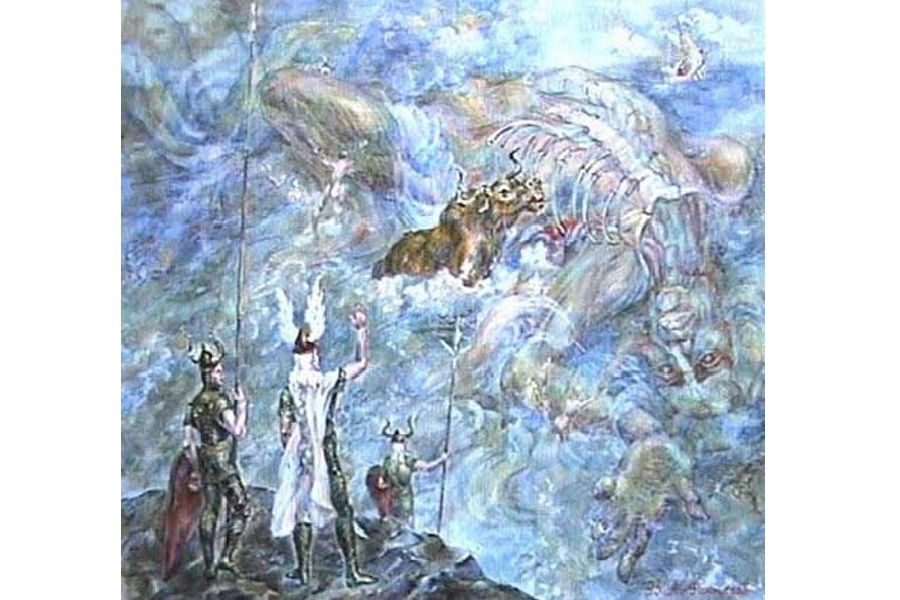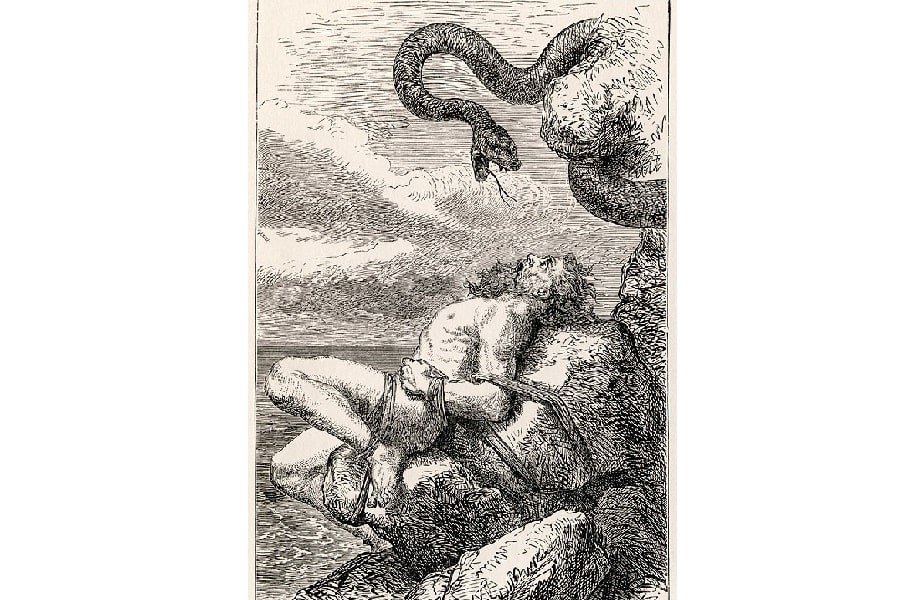Mostly known as Odin’s brothers, Villi and Vé played an important role in Norse mythology. Together, they created the universe and brought cognition, speech, spirituality, sight, and hearing to humans. However, centuries before Christianization took place only Odin appears to be worshipped while his brothers are disappearing. Little is known about Vili outside the Norse creation story, so what happened to Villi? What was his role in Norse mythology and his legacy?
Table of Contents
Who is Vili?

In Norse mythology, Vili, along with his brothers Odin and Vé, played a crucial role in the creation of the world. According to the Prose Edda, after Odin and his brothers slew the giant Ymir, they used his body to create the world. Vili and Vé helped Odin in this process, and they were responsible for creating the land, seas, and sky. Vili’s name is derived from the Old Norse word “vili,” which means “will” or “desire.” This suggests that Vili may have been associated with the will and desire that drove the creation of the world. In addition to his role in creation, Vili is also associated with wisdom, particularly with regards to understanding the intricate workings of the universe.
The Myth of the Creation of the World
The myth of the creation of the world in Norse mythology is a fascinating story that sheds light on the origins of the world and the role of Vili. The story tells of a time before the world existed when there was only a vast void known as Ginnungagap. This void lay between the icy realm of Niflheim and the fiery realm of Muspelheim, and it was from the clash of these two opposing forces that a giant named Ymir was born.
It was Odin, Vili, and Vé who recognized the potential in Ymir’s body and set about creating the world we know today. They used Ymir’s flesh to form the land, his bones to create the mountains, and his blood to make the seas and rivers. From Ymir’s skull, they fashioned the sky, and from his eyebrows, they created Asgard, the realm of the Norse gods.
It was during this creative process that Vili’s importance became clear. Together with Vé, he aided Odin in shaping the world, using his wisdom and strength to bring the vision of the gods to life. This act of creation cemented the position of Odin, Vili, and Vé as the principal gods in the Norse pantheon, known as the Æsir.
This myth also highlights the concept of recycling and regeneration in Norse mythology. The world was not created from nothingness, but rather from the body of a giant. This emphasizes the cyclical nature of life and death, where death is not an end but a beginning of a new cycle of life.
READ MORE: 10 Gods of Death and the Underworld From Around the World
Overall, the myth of the creation of the world provides a rich and intriguing insight into the mythology of the Norse people and the role of Vili in shaping the world we know today.

Vili’s Role in the Creation of Humans
It is believed that Vili and Vé were responsible for giving humans the ability to think, feel, and reason. They infused the newly created human bodies with intelligence and consciousness, allowing them to understand the world around them and make their own choices.
The creation of humans was not an easy task. According to Norse mythology, Odin, Vili, and Vé came across two trees, an ash tree, and an elm tree. They then fashioned the first human couple, Ask and Embla, from these trees, imbuing them with the aforementioned qualities. The story of Ask and Embla is often interpreted as a symbolic representation of the interconnectedness between humans, nature, and the gods in Norse mythology.
The creation of humans marked a significant shift in the Norse pantheon, as it signaled a new era of collaboration between the gods and humans. Humans were seen as co-creators of the world, with the gods relying on them to uphold order and maintain balance in the cosmos. This concept of co-creation is a fundamental aspect of Norse mythology and reflects the importance of interconnectedness and balance in the natural world.
The Myth of the Binding of Loki
The myth of the binding of Loki is one of the most well-known stories in Norse mythology, and Vili’s role in it is significant. After Loki was captured and brought before the gods, they decided to punish him for his actions. They bound him to a rock with the entrails of his son, and Skadi, the goddess of winter, placed a venomous serpent above him to drip poison on his face.
Vili and Vé assisted in the binding by placing additional restraints on Loki. Vili was responsible for placing a cord around Loki’s lips to silence him, while Vé placed a cord around his limbs. These cords were made of the entrails of Loki’s son as well.
The binding of Loki is seen as a cautionary tale about the dangers of trickery and deceit. It also illustrates the importance of justice and accountability in Norse mythology, as the gods were not willing to overlook Loki’s actions and instead held him accountable for his misdeeds.

Vili’s Legacy
How the Norse God Shaped Modern Culture?
Vili has made a lasting impact on popular culture today. One way Vili’s influence is seen is through the Marvel Cinematic Universe, where his brother Odin is a powerful and revered character.
Norse mythology itself has also captured the hearts of audiences for centuries, inspiring literature, music, and art. Countless retellings and adaptations, such as Neil Gaiman’s “Norse Mythology” and the TV series “Vikings,” showcase the enduring appeal of Vili and his fellow gods.
Video games and role-playing games, including “God of War” and “Assassin’s Creed Valhalla,” have also embraced Norse mythology and Vili’s contributions to the creation of the world and his association with wisdom.
Even today, scholars and enthusiasts continue to study and interpret mythology, with new discoveries shedding light on Vili’s role in the pantheon. Ultimately, Vili’s legacy is a testament to the enduring power of Norse mythology, inspiring countless works of art, literature, and entertainment that will continue to captivate and inspire for generations to come.
Conclusion
In conclusion, Vili may not be as famous as his brothers Odin and Vé, but his role in Norse mythology is nonetheless significant. As one of the three creator gods, Vili played a pivotal role in the creation of the world and humans. His ability to see potential in the body of the giant Ymir helped shape the physical landscape of the Norse cosmos, while his involvement in the creation of humans highlights his importance in the pantheon. Additionally, Vili’s involvement in the binding of Loki showcases his ability to act as an enforcer of justice and balance in the Norse world. By delving deeper into the myths and legends surrounding Vili, we can gain a better appreciation for the rich and multifaceted world of Norse mythology.
References:
Norse Mythology for Smart People – https://norse-mythology.org/
The Viking Age Podcast – https://vikingagepodcast.com/
Saga Thing Podcast – https://sagathingpodcast.wordpress.com/
The Norse Mythology Blog – https://www.norsemyth.org/
The Viking Answer Lady – http://www.vikinganswerlady.com/